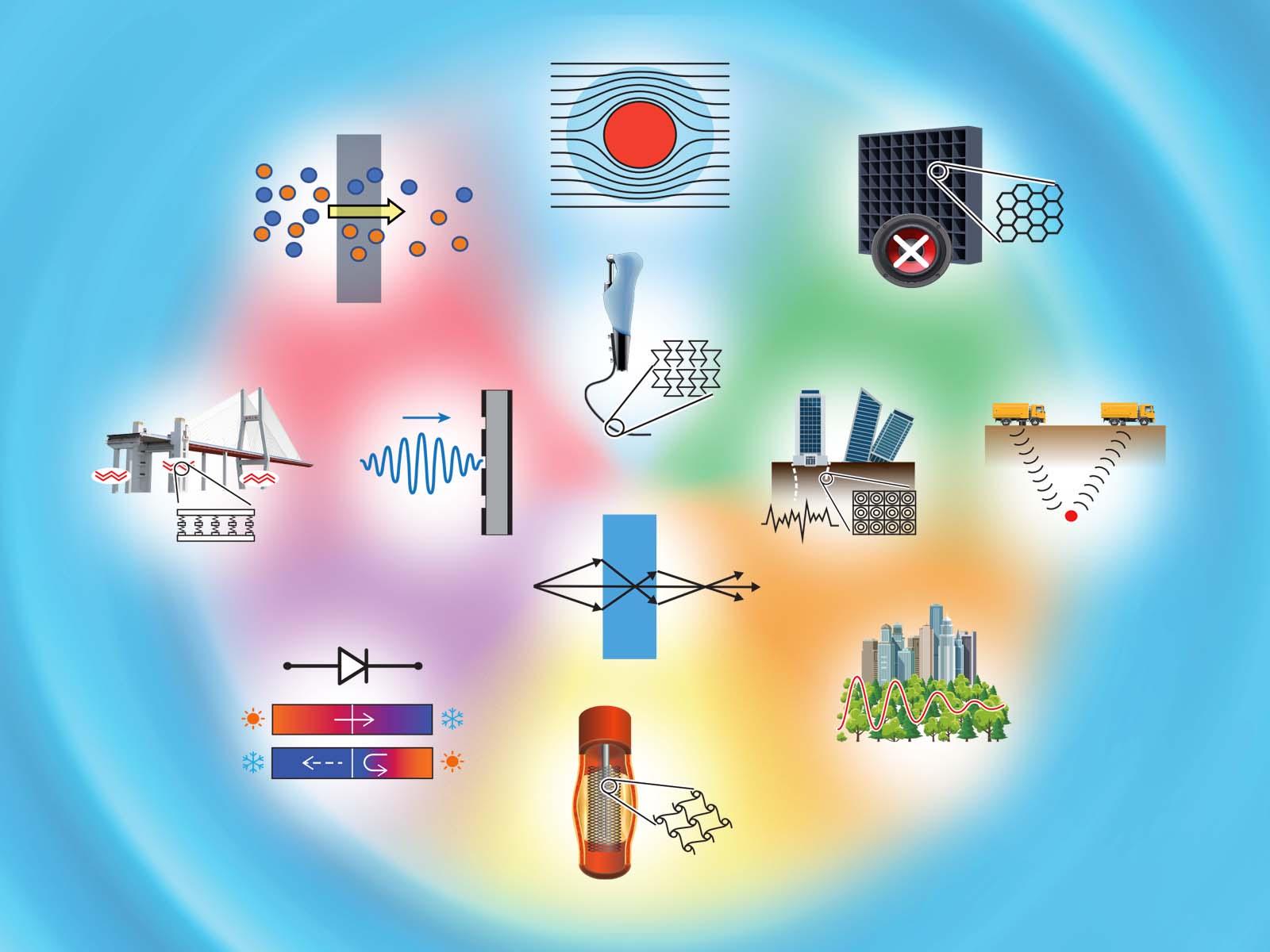Reviewing Metamaterials from Fundamental Design to Applications
A new review article discusses and classifies complex metamaterials

Metamaterials can have a wide range of unique properties, leading to many different potential applications.
(Illustration by Michael Perkins | Pacific Northwest National Laboratory)
Metamaterials are human-created materials where smaller units come together to produce new properties not found in natural materials. Metamaterials, developed and described over the past 20 years, can manipulate different types of waves, depending on their structure.
A new review article from Pacific Northwest National Laboratory (PNNL) researchers, published in Materials Advances, describes the history, current status, and future outlook on metamaterials research. Led by post bachelors research associate Jade Holliman, the review categorizes metamaterials into six different types and explores each in detail. The six types discussed are thermal, mass transport, electromagnetic, acoustic, mechanical, and seismic metamaterials.
This classification scheme represents a clear framework for discussing metamaterials, as the field has grown significantly since its beginning. It groups the metamaterials based on the type of wave they can manipulate. Through classification, Holliman and the team identified common underlying properties, emergent behaviors, and potential applications for each material type.

“Metamaterials still aren’t widely known outside of our research community,” said Holliman. “I hope that this review can introduce the topic to more people and generate new ideas. There are so many exciting opportunities for using metamaterials that we’ve just begun to explore.”
In addition to his leadership on this valuable review article on metamaterials, Holliman’s research at PNNL has involved multiple projects. Holliman was originally hired as an intern during his senior year at Fisk University. He analyzed large quantities of data from the Wallula Basalt project, preparing a report and contributing to a related publication. After completing his undergraduate education and internship, Holliman joined mentors Quin Miller and Todd Schaef full time at PNNL in 2021.
Currently, Holliman spends his time in the laboratory working with acoustic metamaterials in a miniature earthquake machine. His primary research project explores how nanoparticle contrast agents may be deployed to monitor carbon dioxide (CO2) stored beneath the Earth’s surface.
To combat climate change, scientists are developing methods to isolate and store CO2 underground, including in basalt formations. The unique nature of basalts is creating demand for novel ways to adapt existing imaging technologies to prove the long-term fate of CO2 in these reservoirs. Holliman’s project explores how metamaterials that absorb sound waves can help researchers better detect CO2 trapped in subsurface rock formations, including potential basalt reservoirs.
Where does Holliman see the future of metamaterials? “We have so much more to learn,” said Holliman. “We’ve only started scratching the surface of what metamaterials may be able to do, from earthquake-proofing buildings to hiding things in plain sight through optical cloaking.”
In addition to Holliman, the other PNNL authors are Quin Miller, Pete McGrail, and Todd Schaef. The work was supported by the Department of Energy Office of Fossil Energy and Carbon Management.
Published: December 13, 2022